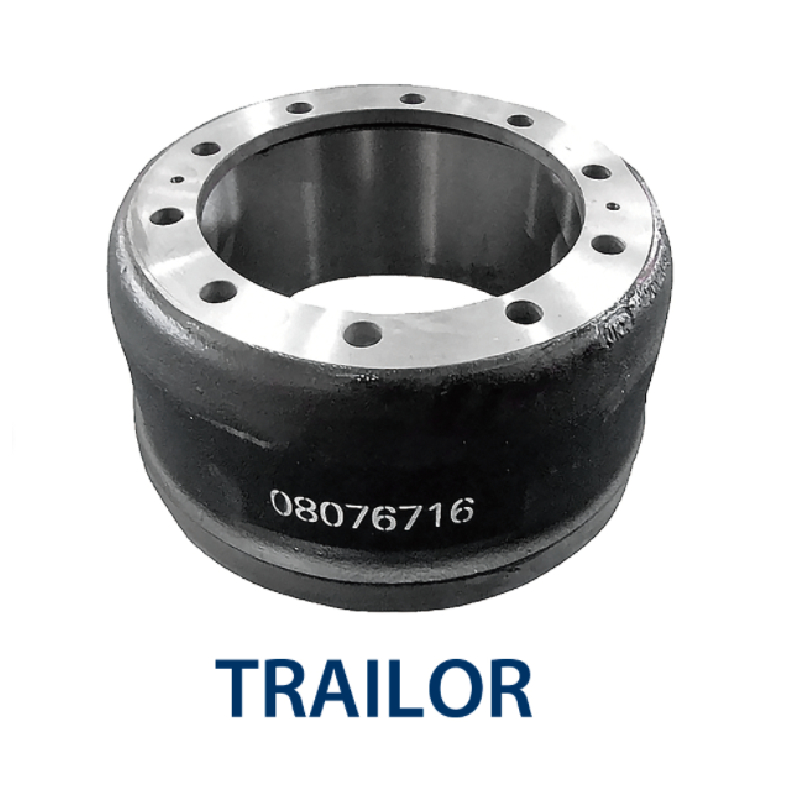Nov . 19, 2024 08:08 Back to list
Common Indications That Your Brake Drums Are Malfunctioning or Need Replacement
Signs of Bad Brake Drums Ensuring Safe Driving
When it comes to vehicle maintenance, brakes are among the most crucial components ensuring driver and passenger safety. Brake drums, specifically, are essential for drum brake systems, which are often found in older vehicles and on the rear axles of some modern cars. Over time, brake drums can wear out and fail, leading to diminished stopping power and potential accidents. Recognizing the signs of bad brake drums is vital for maintaining vehicle safety and performance.
Understanding Brake Drums
Brake drums are circular metal components attached to the wheel hubs. When the driver presses the brake pedal, brake shoes inside the drum press outward against the drum’s inner surface, generating friction that slows down the vehicle. This mechanism is reliable, but like all mechanical parts, brake drums can suffer from wear and tear due to various factors, including driving habits, frequency of use, and environmental conditions.
Common Signs of Worn Brake Drums
1. Increased Stopping Distance One of the primary indicators of bad brake drums is an increase in the vehicle's stopping distance. If you notice that your car takes longer to stop than it used to, this could signify that the brake drums are worn or damaged. Reduced braking efficiency poses a serious risk, particularly in emergencies where quick stops are necessary.
2. Grinding or Squeaking Noises Unusual noises from the brakes are a clear sign that something is amiss. If you hear a grinding sound, this may indicate that the brake shoes have worn down completely, causing metal-to-metal contact with the drum. A squeaking or squealing noise may suggest debris trapped between the drum and shoes or wear indicators signaling that replacement is due.
signs of bad brake drums

3. Vibration or Pulsation During Braking If you feel vibrations or pulsations in the brake pedal when applying the brakes, it may be a sign that the brake drums are warped. Warpage can occur due to excessive heat buildup from prolonged or heavy braking. This uneven surface can lead to poor braking performance and should be addressed immediately.
4. Brake Pedal Feel A spongy or soft brake pedal may indicate an issue with the brake system, including the brake drum components. If you experience a pedal that sinks further than normal before engaging, it could signal worn brake drums or a problem with the hydraulic system. Conversely, a very hard pedal feel can also indicate problems, possibly due to drum deformation.
5. Visual Inspection Regular visual inspections of your brake drums can also help identify issues early. Look for signs of scoring, cracking, rust, or excessive wear. If you notice uneven wear patterns or a rough texture on the brake drum’s surface, these are signs that the drums may need resurfacing or replacement.
6. Pulling to One Side If your vehicle pulls to one side while braking, this may indicate an issue with the brake components, including the brake drums. Uneven wear can lead to one brake engaging more forcefully than the other, leading to a loss of control. It’s essential to diagnose and repair pulling issues promptly.
Conclusion
Recognizing the signs of bad brake drums is critical for vehicle safety. Regular maintenance and timely inspections can help ensure that brake components remain in good condition, ultimately protecting you and your passengers. If you experience any of the aforementioned symptoms, do not hesitate to consult a professional mechanic. Ignoring these signs can lead to significant safety hazards on the road. Remember, maintaining a reliable braking system is not just about performance; it’s about ensuring safety for everyone on the road. Regular checks can provide peace of mind, knowing that your vehicle is equipped to respond effectively in any driving situation.
-
HINO Industrial Solutions - ¡Ң���ຽ��е��������˾ | Advanced Efficiency&Customization
NewsJul.13,2025
-
HINO Industrial Efficiency Solutions - ¡Ң���ຽ��е��������˾
NewsJul.13,2025
-
HINO Industrial Solutions - ¡Ң���ຽ��е��������˾ | Advanced Technology&Reliability
NewsJul.13,2025
-
HINO Industrial Efficiency-Jiangsu Hino Industrial|Productivity Optimization&Cost Reduction
NewsJul.12,2025
-
HINO-¡Ң���ຽ��е��������˾|Advanced Industrial Solutions&Energy Efficiency
NewsJul.12,2025
-
Premium Brake Drum Iveco – Durable Drum Brake Drum & Brake Shoe Solutions
NewsJul.08,2025
